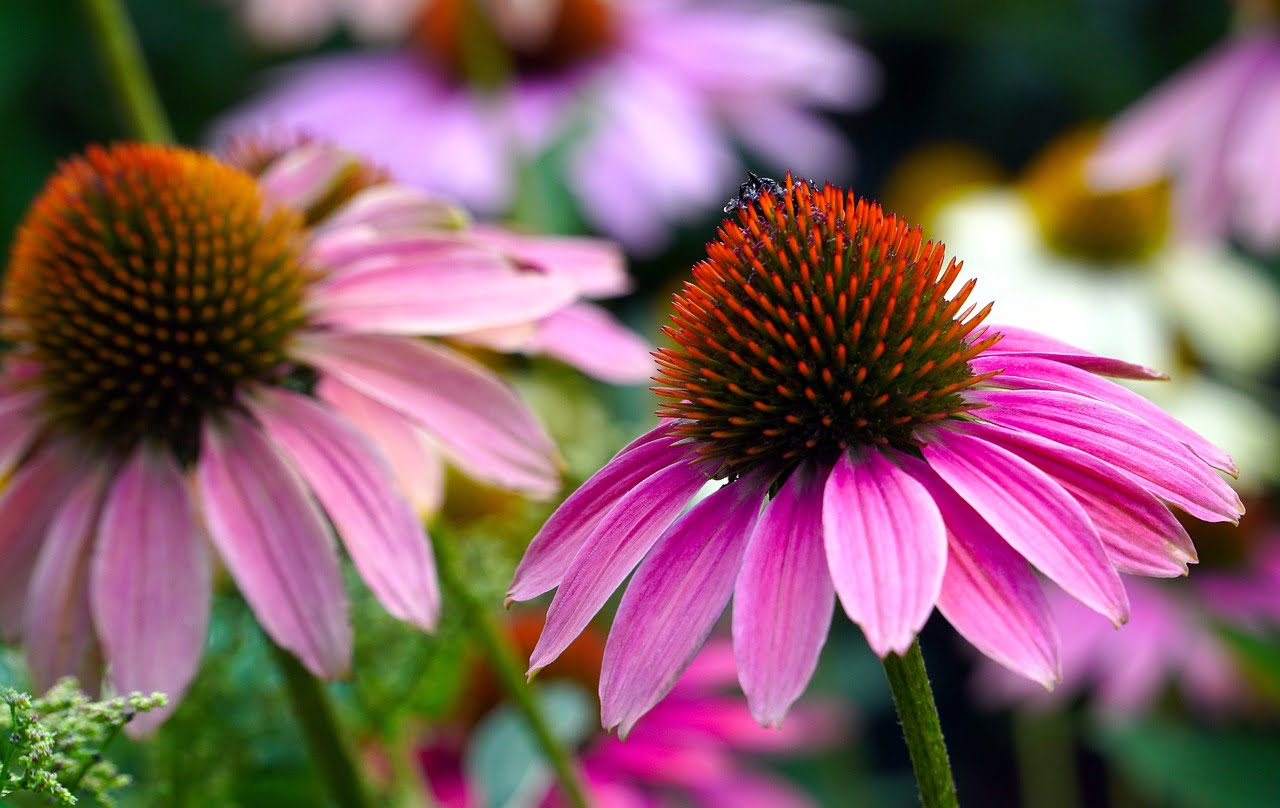
Echinacea planting: A Botanical Marvel
Echinacea planting, also known as the purple coneflower, has been captivating plant enthusiasts and herbalists for centuries. Its striking, daisy-like flowers, characterized by vibrant purple or pink petals and a prominent cone-shaped center, make it a favorite in gardens and natural medicine.
Echinacea’s Rich History
Echinacea has a storied history among indigenous North American tribes, who recognized its medicinal value long before European settlers arrived. These Native American communities used various parts of the plant, including the roots, leaves, and flowers, to treat a wide range of ailments, from snakebites to sore throats.
The Science Behind Echinacea’s Healing Properties
Modern research has shed light on the science behind Echinacea’s therapeutic qualities. The plant is loaded with bioactive compounds such as echinacoside, echinacein, and alkamides, which are believed to contribute to its immune-boosting and anti-inflammatory effects.
Echinacea’s immune-boosting abilities are particularly noteworthy. It stimulates the production of white blood cells, which play a crucial role in defending the body against infections. This makes it a valuable ally in preventing and managing illnesses, especially during the cold and flu season.
Cultivating Echinacea: Tips for Success
If you’re considering introducing Echinacea into your garden, here are some essential tips to ensure successful cultivation:
1. Site Selection
Selecting the right location is paramount for Echinacea’s well-being. These plants thrive in areas with full sun to partial shade. When choosing a spot in your garden, consider the following:
- Ensure the soil is well-draining to prevent root rot.
- Adequate sunlight is essential for robust growth and abundant flowering.
2. Starting from Seeds
Growing Echinacea from seeds can be a rewarding experience, allowing you to witness the plant’s complete life cycle. Here’s how to get started:
- Plant the seeds in the spring or early summer. Ensure they are sown about 1/4 inch deep in the soil.
- Leave enough space between seeds to accommodate their growth, usually 18 to 24 inches apart.
- Be patient; germination can take anywhere from two to four weeks.
3. Echinacea Care
Once your Echinacea plants are established, they require minimal maintenance. Here are some care tips to keep them flourishing:
- Watering: While Echinacea is somewhat drought-tolerant, it’s essential to provide consistent moisture, especially during dry spells or prolonged periods without rain.
- Deadheading: Regularly remove faded blooms to encourage continuous flowering. This not only keeps your garden looking beautiful but also supports the plant’s vitality.
- Dividing: Every three to four years, consider dividing mature Echinacea plants to prevent overcrowding and rejuvenate their growth.
Beyond Medicine: Echinacea’s Versatile Applications
Echinacea’s utility extends beyond herbal medicine and gardening. Let’s explore how this remarkable plant can be integrated into various aspects of life:
Medicinal Echinacea
In herbal medicine, Echinacea takes center stage for its immune-boosting properties. Here are some common ways to harness its benefits:
- Echinacea Tea: Easily prepare a soothing and health-enhancing tea by steeping dried Echinacea leaves and flowers in hot water for 10-15 minutes. Strain and enjoy the herbal goodness.
- Tinctures: Echinacea tinctures are concentrated extracts that can be added to water or juice. They offer a convenient way to incorporate Echinacea into your daily routine.
- Supplements: Capsules and tablets containing Echinacea extract are available as dietary supplements. These are convenient for those seeking a consistent intake of Echinacea.
Ornamental Echinacea
The aesthetic appeal of Echinacea is undeniable. The various colors and shapes of its flowers make it an ideal choice for both novice and seasoned gardeners. Consider these ornamental uses:
- Colorful Borders: Plant Echinacea along borders or in flower beds to add a burst of color to your garden. Mix different Echinacea varieties to create eye-catching displays.
- Butterfly Gardens: Echinacea’s nectar-rich flowers attract butterflies, enhancing the beauty and biodiversity of your garden.
Echinacea: A Haven for Wildlife
Echinacea isn’t just for human enjoyment; it plays a vital role in supporting local wildlife.
A Bee’s Paradise
Bees are essential pollinators for many plants, including those in your garden. Echinacea’s pollen-rich flowers are a magnet for bees, providing them with sustenance while facilitating the pollination of nearby plants.
Nourishing Our Feathered Friends
As summer turns to fall and the Echinacea flowers fade, they leave behind seed heads that continue to serve a purpose. These seed heads become a valuable food source for birds during the winter months, aiding in their survival when other food options are scarce.
Conclusion
In summary, Echinacea is a versatile and valuable addition to gardens and households alike. Its captivating beauty, medicinal properties, and support for local wildlife make it a must-have for nature lovers, herbalists, and garden enthusiasts.
Now, as you embark on your journey with Echinacea, whether it’s for its health benefits, its visual splendor, or its contribution to biodiversity, you have a deeper understanding of this extraordinary plant’s many facets.
FAQs (Frequently Asked Questions)
1. How do I prepare Echinacea tea?
To make Echinacea tea, steep dried Echinacea leaves and flowers in hot water for about 10-15 minutes. Strain and enjoy a soothing, immune-boosting beverage.
2. Can I grow Echinacea indoors?
While Echinacea thrives outdoors, you can grow it indoors in pots with proper sunlight and well-draining soil. Be sure to mimic its preferred conditions as closely as possible.
3. Are there any side effects of using Echinacea?
Echinacea is generally safe when used responsibly. However, some individuals may experience mild side effects such as an upset stomach or allergic reactions. Consult a healthcare professional if you have concerns.
4. What pests should I watch out for when growing Echinacea?
Common pests that may affect Echinacea include aphids and Japanese beetles. Regularly inspect your plants and use natural pest control methods to manage these issues without harming the environment.
5. How long does it take for Echinacea to bloom?
Echinacea typically blooms in its second year when grown from seeds. If you start with mature plants, you can expect to enjoy their vibrant flowers in the first year of planting.